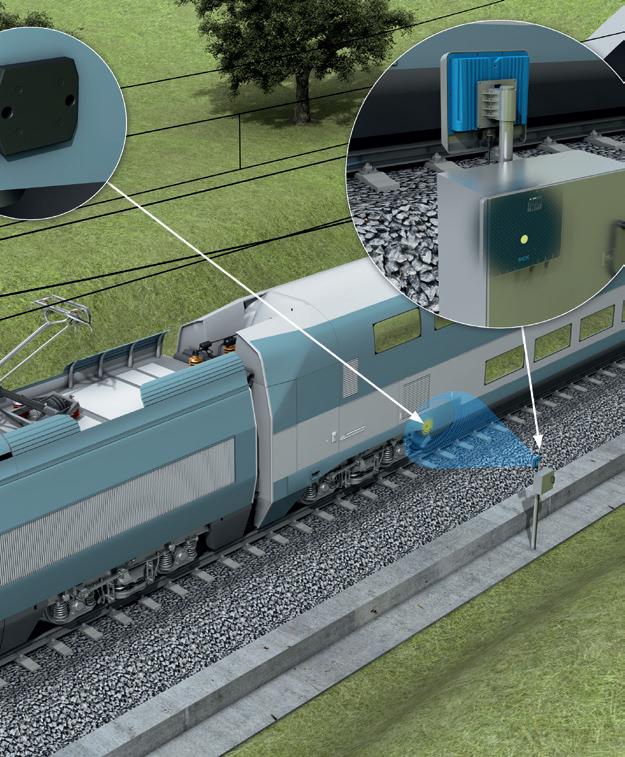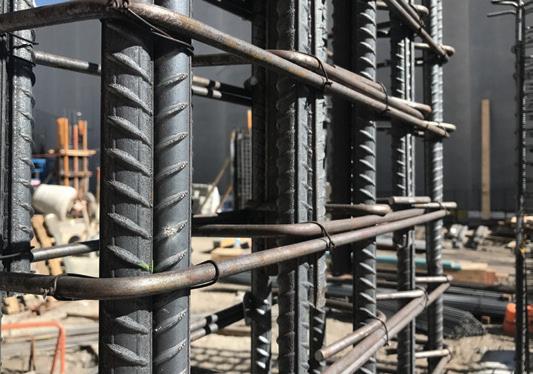
3 minute read
ASSET INSPECTION & DRONES/UAVS
WHY IMPLEMENT RADIO FREQUENCY IDENTIFICATION ON RAILROADS?
Radio frequency identification (RFID) provides significant benefits for the preventive maintenance and monitoring of railways all over the globe, including asset tracking and reduced costs.
Advertisement
Hundreds of derailments occur on European railroads every year and according to the D-RAIL project, an average derailment has an impact of more than €800,000. Some of the major reasons for these accidents occurring include wheel, axle and suspension failures due to wear and tear, as well as incorrect loading.
To fix this several hundred million-euro problem, vehicle owners are investing significantly in preventive maintenance and monitoring systems. This requires a complex infrastructure of wayside train monitoring systems (WTMS) such as hot axle box detectors (HABD), axle load checkpoints (ALC) and other devices (ultrasonic sensors, high resolution cameras, etc.) along the rail tracks. These systems have already been in place for years.
The question now is, why add RFID into that process by tagging each train wagon with on-metal UHF RFID tags and mounting RFID long-range readers at the WTMS?
Well, the additional information of the unique RFID tag will enable a link between the critical measured values (detected failure) and the specific vehicle, wheel set, axle, brake and suspension.
Using RFID allows you to know in advance the specific part that requires rework. RFID also provides the following customer benefits: ♦ Reducing maintenance costs ♦ Reducing high-cost emergency maintenance ♦ Better planning due to real-time information about the vehicle’s condition ♦ Higher availability of rail vehicles and better reliability during operation ASSET TRACKING – KNOW WHERE YOUR TRAIN IS
In addition to improving preventive maintenance, the second reason to implement RFID on railroads is the classical UHF use case: real-time asset tracking. This gives all involved parties (vehicle owner, railway undertaking, infrastructure manager, entity in charge of maintenance) the answers to the questions: what? where? when? and why?
For example, companies in cargo transport can finally have an answer when their customer asks, “Where are my goods/ cargo?”. There are also the additional benefits of better planning for vehicle availability and a reduction in unused capacities.
WHY USE SICK RFU630?
During work on a project with a leading European transport agency, the team at SICK learnt that the following features were significant to the success of the project:
Industrial design 1. Ruggedised housing EN 50125 (shock vibration) 2. Solid electronics compliant with rail norm EN 50121 (EMC) 3. Wide operating temperature range -30°C to +60°C (RFA630) 4. Outdoor IP67 protection class
Fast data processing ♦ Read tags > 200km/h ♦ Accurate time stamps
The SICK solution provided for the project is the SICK RFU630 – a UHF RFID read/write device combined with sensors that count the axles. This is necessary, not only to assign the tag to the vehicle/wheelset, but also to provide speed, direction of travel, orientation of vehicle, and order of vehicles within the train.
THE BAGGAGE CONNECTION.





Where is the suitcase? Complete transparency is required in the transport chain ‒ also according to IATA Resolution 753. Martin is taking care of this with a partner who really knows what they’re doing: SICK. Being familiar with airport infrastructures all over the world, SICK also off ers all three technologies for baggage identifi cation ‒ laser, camera, RFID. So that every scan point is custom-fi t. No suitcase gets lost, read rates increase, handover errors are quickly identifi ed. Martin is pleased. Thanks to SICK, he is connected to the baggage at all times and therefore more than ready for the future. We think that’s intelligent. www.sick.com/baggage-tracking










